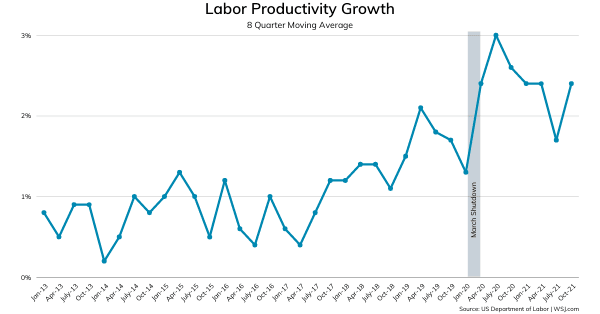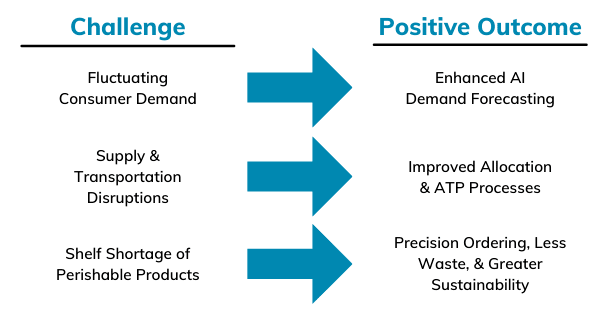It's time for some good news. Labor productivity grew by 2.2% annually between 2020 and 2021, up from a 0.9% average annual growth from 2011 to 2019. Before attributing this to people working more hours, labor productivity is measured as the output per worker hour. Hence, people are becoming more efficient.

According to a WSJ.com article, a boom in technology investment and other capital spending has fueled these productivity gains. If sustained, these investments could boost living standards and counteract inflation. The pandemic, labor shortages, inflation, and shift to remote work have been reasons for this increased spending since technology improves automation and eliminates menial, mind-numbing tasks. All I can say is, "Yeah!" I've done many tedious, stupid assignments that could have been better with readily available technology – from faxing documents instead of emailing to cutting fields with a scythe. And no, I'm not that old or from regions where a weed eater wasn’t available.
I'm biased. I work for a technology company, so I'm partial to technology success stories. But there is more to this phenomenon. After all, businesses were still investing in technology over the last ten years. Yet, there has been a notable shift in the quality and value of software solutions in the previous few years that are directly attributable to AI, cloud computing, and SaaS. With AI and cloud computing advancements, software solutions can process immense amounts of data and provide higher value. Due to SaaS, software providers have become a lot more accountable. They need their software to be implemented, used, and do what they say it does. They also need to ensure that it is upgraded with the latest features. If they fail at this, the revenue stream dwindles.
These approaches have reignited the debate for best-of-breed solutions versus large single-vendor solutions. In my previous life, I implemented these large ERP systems. While they could be very beneficial, they weren't a safe bet. The running joke for any CIO was that as soon as they signed up for these 2-5 year implementations, they would also get their resumes ready. It was common for many products in large software license bundles to never be implemented. Those same products could become outdated due to the costs, testing, and work needed for the patches and upgrades.
Software solutions are more robust and increasingly responsive to today’s business environment. That is why, despite the challenges in inventory, supply chain and inflation, I'm an optimist about the future.
- We see constant shifts in consumer demand, but AI forecasting has become very adept at picking up these demand signals, increasing forecast accuracy and agility for changing consumer behavior.
- We see supply chain and transportation disruptions, yet we see better management and distribution of the incoming supply and inventory on-hand through sounder allocation and Available to Promise processes.
- We see shelf shortages and pressure put on goods such as bread. Yet, we have less waste and enhanced sustainability for both short and long-term economic and ecological health due to precision SKU/Store/Day ordering.

Would businesses have made such capital investments in technology without the pandemic, labor shortages, inflation, and remote work? Would they have made them if they were told their productivity would increase by 130 basis points? Some would have, sure. But not at the scale that we are seeing. Not at the level which would affect the economy so broadly. My department could easily have bought me a weed eater instead of forcing me to use a rusty scythe dug up from an old tool shed. But they didn’t, despite the payoff. Yet, if I and my coworker had become fed-up and quit, maybe they wouldn’t have found someone willing to do what we did (Labor Shortage). Sometimes we need an outside force to move forward as a society, and while it is easy to focus on the negatives. (They get more clicks). The positives are there too.

